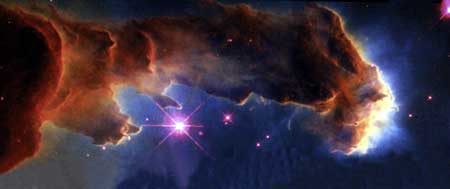 |
|||||||||
|
Research Feature Stories: Other News: |
New Scientists Being Trained in This Field
The UW’s interdisciplinary astrobiology graduate program looks at the origin of life on Earth and the likely conditions for life to occur on other planets. Among the first of its type in the world, this National Science Foundation-funded training program brings together 14 faculty members from 11 UW departments. Faculty from the departments of microbiology, biochemistry, and genome sciences are addressing such questions as how life may have begun on Earth and how 4 billion years of global change have affected life. They are jointly exploring the most extreme environments supporting life on this planet, whether conditions for life may exist on other planets, and how to search for extinct or extant extraterrestrial life.
 |
|
Astrobiologists look outward to space and into Earth’s recesses to see why life appears in inhospitable environments, such as sea ice and subterranean basalt. This image shows star formation from interstellar gas and dust. The picture was taken with the NASA Hubble Space Telescope Wide Field and Planetary Camera 2 by Jeff Hester and Paul Scowen of Arizona State University. |
Some researchers are studying organisms that survive in seemingly impossible places such as sea ice, hydrothermal vents, and subterranean basalt. Other astrobiology research includes prebiotic and microbiotic evolution, methods for detecting life, and health and environmental issues. This past year, the new program benefited from a five-year, $4.9 million renewable grant from the National Aeronautics and Space Administration (NASA). The grant will fund research on how, where, and how often habitable planets are formed; how often planets lose their habitability because of comet or asteroid impacts or other factors that trigger mass extinction; and challenges faced by single-cell life evolving to more complex forms. Dr. James Staley, professor of microbiology, directs the astrobiology program.
|
| UW AMC Medical Center | UW School of Medicine | Harborview | UW MC | Search UW AMC | UW Home | Contact Us | ©2001-2002, University of Washington Academic Medical Center. All rights reserved. Please honor our copyrights. |
|